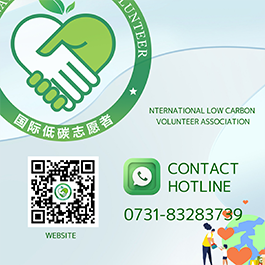Accelerate the improvement of the green supply chain system for enterprises!
Accelerate the improvement of the green supply chain system for enterprises!
The General Office of the Ministry of Industry and Information Technology, the General Office of the Ministry of Transport, and the General Office of the Ministry of Commerce have recently issued the "Guidelines for Improving the Supply Chain Management Level of Manufacturing Enterprises (Trial)" (hereinafter referred to as the "Guidelines"), aiming to further accelerate the implementation of the Manufacturing Supply Chain Improvement Project and promote the deep integration of modern supply chain systems into the manufacturing industry chain.
The Guide proposes that currently, a new round of technological revolution and industrial transformation is in the ascendant, and modern service industries are deeply integrated with advanced manufacturing industries. China's manufacturing industry is in a critical period from large to strong, and there is an urgent need to promote the deep integration of modern supply chain systems into the manufacturing industry chain, enhance the supply chain management level of manufacturing enterprises through multi-party cooperation, and assist in the high-quality development of the manufacturing industry.
The Guide includes 27 measures in 8 aspects. Among them, in terms of improving the green supply chain system of enterprises, the Guidelines propose to vigorously promote the design of green supply chains. Enterprises should integrate the concept of low-carbon and recycling into the entire process of supply chain design. Priority should be given to selecting renewable, biodegradable and other green materials, gradually reducing the types and usage of non green materials. Actively applying green design technology, accelerating the development of more green products with high reliability, easy packaging and transportation, easy disassembly and recycling, and low energy consumption and pollutant emissions throughout the entire lifecycle, gradually improving the supply of green products. Promote packaging reduction and recyclability, and promote the use of recyclable transportation packaging. Optimize the logistics organization mode, accelerate the promotion and application of logistics vehicles such as standard pallets and turnover boxes (baskets), and promote circular sharing, and increase the proportion of clean energy vehicles and ships.
Actively carry out green procurement. Enterprises should practice the concept of green procurement, formulate and improve green procurement management systems in accordance with relevant green product identification and evaluation standards, and gradually increase the proportion of green procurement. Encourage enterprises to carry out green supplier management and evaluate a list of green suppliers. Encourage supply chain leading enterprises to regularly conduct green procurement training and guide suppliers towards green development.
Deepen the promotion of clean production. Enterprises should prioritize the use of green processes, technologies, and equipment to reduce resource and energy consumption and pollutant emission intensity in the production process. High energy consuming enterprises should establish energy management centers to achieve refined energy management. Promote the circular production mode, promote the comprehensive utilization of solid waste, energy cascading utilization, and water resource recycling, improve the comprehensive utilization level of renewable resources, and achieve ecological linkage, mutual supply of raw materials, and resource sharing. Implement the extended producer responsibility system and establish a reverse recycling system for waste materials through independent recycling, joint recycling, and commissioned recycling. Encourage eligible enterprises to vigorously develop the remanufacturing industry around traditional electromechanical products, high-end equipment, in-service equipment, and other fields, and strengthen the promotion and application of remanufactured products.
Carry out product carbon footprint accounting. Supply chain leading enterprises should actively explore and carry out product carbon footprint accounting, leading or participating in the formulation and revision of industry carbon footprint accounting rules and standards. Encourage upstream and downstream enterprises in the supply chain to open up and share carbon emission data. Encourage large enterprises to collaborate with industry associations and increase efforts to cultivate carbon footprint accounting talents, provide technical consulting services to the industry, and enhance the industry's carbon footprint accounting capabilities. Encourage industries with conditions to establish Product Environmental Declaration (EPD) platforms, disclose environmental impact information such as carbon footprint to the public, and promote mutual recognition and acceptance among upstream and downstream industries.
加快健全企业绿色供应链体系!
工业和信息化部办公厅、交通运输部办公厅、商务部办公厅近日印发《制造业企业供应链管理水平提升指南(试行)》(以下简称《指南》),旨在进一步加快实施制造业供应链提升工程,推动现代供应链体系深度嵌入制造业产业链。
《指南》提出,当前,新一轮科技革命和产业变革方兴未艾,现代服务业与先进制造业深度融合,我国制造业正处于由大到强的关键时期,亟需推动现代供应链体系深度嵌入制造业产业链,多方协作提升制造业企业供应链管理水平,助力制造业高质量发展。
《指南》包括8个方面27条举措。其中,在健全企业绿色供应链体系方面,《指南》提出,要大力推动绿色供应链设计。企业应将低碳化、循环化理念融入供应链设计全过程。优先选择可再生、可降解等绿色材料,逐步减少非绿色材料种类和使用量。积极应用绿色设计技术,加快开发更多具有高可靠性、易包装运输、易拆卸回收及全生命周期资源能源消耗少、污染物排放小的绿色产品,逐步提高绿色产品供给。推动包装减量化、可回收,推广使用可循环运输包装。优化物流组织模式,加快标准托盘、周转箱(筐)等物流载具推广应用和循环共用,提升清洁能源车船应用比例。
积极开展绿色采购。企业应践行绿色采购理念,按照有关绿色产品认定和评价标准,制定完善绿色采购管理制度,逐步提高绿色采购比例。鼓励企业开展绿色供应商管理,评定一批绿色供应商名单。鼓励供应链主导企业定期开展绿色采购培训,引导供应商绿色化发展。
深入推进清洁生产。企业应优先选用绿色工艺、技术和设备,降低生产过程资源能源消耗和污染物排放强度。高耗能企业应建立能源管理中心,实现能源管理精细化。推行循环生产方式,促进固体废物综合利用、能量梯级利用、水资源循环利用,提升再生资源综合利用水平,实现生态链接、原料互供、资源共享。落实生产者责任延伸制度,通过自主回收、联合回收、委托回收等方式建立废旧物资逆向回收体系。鼓励有条件的企业围绕传统机电产品、高端装备、在役装备等领域,大力发展再制造产业,加强再制造产品推广应用。
开展产品碳足迹核算。供应链主导企业要积极探索开展产品碳足迹核算,牵头或参与制修订行业碳足迹核算规则标准。鼓励供应链上下游企业开放共享碳排放数据。鼓励大型企业联合行业协会等加大培养碳足迹核算人才力度,面向行业提供技术咨询服务,提升行业碳足迹核算能力。鼓励有条件的行业建立产品环境声明(EPD)平台,对外披露碳足迹等环境影响情况,推动上下游产业实现互认和采信。








